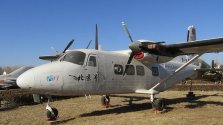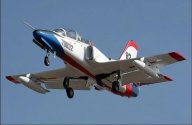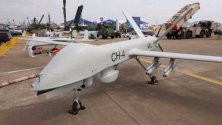That’s clearly a lie. Recent J-16 pilot honored for intercepting and besting two F-22s was involved in an intercept of MKIs where he sneaked up on them after shutting down all electronics.This is from the ruling political party of India.
Chinese ships and aircraft never interact with Indian ones unlike the Japanese, Americans, Australians, Canadians, etc.
Yet, there is this need to continually lie to the world to gain a perception advantage in comparison to China. The only challenge from India to China is on the propaganda front.
You are using an out of date browser. It may not display this or other websites correctly.
You should upgrade or use an alternative browser.
You should upgrade or use an alternative browser.
Indian Military News, Reports, Data, etc.
- Thread starter bd popeye
- Start date
Frankly speaking, it's a bit of a miracle (and persistence) anything worked out at all - such projects usually fail altogether.
Frankly, it is a miracle they got the Tejas somewhat in production and inducted (despite it being an obsolete point defense fighter with little utility in the modern age as shown in being a no-show in both 2019 and 2025.)
The reason I agree it is a miracle is because India failed even more miserably in less challenging aircraft classes like
1) a light prop-driven driven utility plane, the Saras,
2) intermediate jet trainer, the IJT,
3) a prop driven UAV, the Rustom/Tapas.
It has perfectly good utility, provided it works well.Frankly, it is a miracle they got the Tejas somewhat in production and inducted (despite it being an obsolete point defense fighter with little utility in the modern age as shown in being a no-show in both 2019 and 2025.)
It's just one of similar aircraft, potentially one of more capable among those (JAS-39CDE, JF-17 blk.3, Tejas mk.1a, F/A-50 blk.70, F-CK-1CD, Hurjet). As mentioned in a different topic, aircraft of this type could've been significant situational breakers in, say, Ukraine, which is highest tier battlefield in the world as of now. Simply because they easily provide sufficient capability @ mass - something all but maybe two largest modern air forces just struggle with.
It's in undesirable to generalize this way. It's different programs with different challenges.The reason I agree it is a miracle is because India failed even more miserably in less challenging aircraft classes like
1) a light prop-driven driven utility plane, the Saras, 2) intermediate jet trainer, the IJT,
China, despite J-20, is stuck with L-15 limbo. So is Russia, which failed i even forgot how many initial turbpoprop trainers.
Just b/c bright heads in both cases didn't derisk powerplants right until lightning struck. Or same bright heads in both countries failed CR929 largely b/c no one even considered that having RR engine as single option is not exactly a bright idea when you're developing something with Russia.
The Russian UTS-800 turboprop trainer is in production. The Yak-152 is not but that is because of the engine.
Yak were using a German made engine from a German company founded by a Russian, with Russian investors providing the capital. The founder provided engines to Russia post 2014 and got himself arrested in Germany.
Yak were using a German made engine from a German company founded by a Russian, with Russian investors providing the capital. The founder provided engines to Russia post 2014 and got himself arrested in Germany.
It has perfectly good utility, provided it works well.
It's just one of similar aircraft, potentially one of more capable among those (JAS-39CDE, JF-17 blk.3, Tejas mk.1a, F/A-50 blk.70, F-CK-1CD, Hurjet). As mentioned in a different topic, aircraft of this type could've been significant situational breakers in, say, Ukraine, which is highest tier battlefield in the world as of now. Simply because they easily provide sufficient capability @ mass - something all but maybe two largest modern air forces just struggle with.
It's in undesirable to generalize this way. It's different programs with different challenges.
China, despite J-20, is stuck with L-15 limbo. So is Russia, which failed i even forgot how many initial turbpoprop trainers.
Just b/c bright heads in both cases didn't derisk powerplants right until lightning struck. Or same bright heads in both countries failed CR929 largely b/c no one even considered that having RR engine as single option is not exactly a bright idea when you're developing something with Russia.
1) Utility aircraft, Intermediate Trainer, UAV all developed and fielded decades ago.



There is a difference between issues with a particular project and the systematic failures of Indian projects across the board.
2) What L-15 limbo? It was exported, in service as the JL-10 and there is a catapult variant. What more do you need for it to be out of "limbo." (This foolishness is like the Indians refrain that China cannot build engines when the WS-10 is powering hundreds of frontline fighters.)
Production is effectively stuck for last few years, b/c Ukrainian engines. Replacement maybe is about to solve the issue, but fact remains.2) What L-15 limbo? It was exported, in service as the JL-10 and there is a catapult variant. What more do you need for it to be out of "limbo."
Hi,
that shitty junk Pl15 been out for more than 10 years , now Chinese about to put up their
Pl16/17 with their fighters and DRDO is after 10 years old missile to fight a two front war
give them a applause But by this virtue indian need another 5/7 years to check with
PL15 by the time Chinese might be doing something like very very long range missile about
to come out
thank you
that shitty junk Pl15 been out for more than 10 years , now Chinese about to put up their
Pl16/17 with their fighters and DRDO is after 10 years old missile to fight a two front war
give them a applause But by this virtue indian need another 5/7 years to check with
PL15 by the time Chinese might be doing something like very very long range missile about
to come out
thank you
Indian airforce had the Gnats and Hunters. The Gnats were being assembled by HAL. So the Maruts were never operating in a vacuum.Solving J-7 took China like 2 decades, and was rather controversial (independent attempt to go all-weather interceptor route never really worked out, for example).
But J-7 wasn't there in a vacuum (J-6 was there, alive and kicking), and more importantly, process was gradual and staged: Vanilla J-8 isn't exactly a step too far from J-7, nor is something like J-7E.
China's struggles with the J-7s is no excuse for India to lack continuation between Marut and Tejas. In any case, China's J-7 struggles is not something to be criticized in the same breath as the Indian fighter program. Because China eventually went through the growing pains and was able to lay the foundations for its own fighter program.
The Tejas program started in 1983. Marut retired in 1990. There was plenty of time to take lessons from the Marut and practice them in the Tejas. By comparison, China was producing J-7s and J-8s in the 1980s. The J-10 development started in 1986, and nobody can dispute the program's success. Both had sufficient continuation of fighter development and production. One failed, while the other succeeded.Tejas was born far too late for Marut expertice to transfer, and was far too much of a jump (Marut is, at best, J-6 level aircraft, and after that Indians decided that they're good to directly jump to aircraft far more advanced than M2000), with own engine, radar and everything. Everything was in addition to rather unhealthy climate (China fights mostly proxy wars in the air, and is nuclear; India isn't nuclear, fights directly and can't really afford being late).
Furthermore, China remembers well being chocked between early 1960s and late 1970s; India always had international aid to rely on.
Contrary to what you say. I believe that India was in a much healthier environment than China to develop it's fighter jets. No splitting with the Soviets, no colour revolution attempts by the West. Full access to available export technologies from both sides for decades. Plus India had wars to hone the skills of its airforce. It's their biggest boasting point when they compare themselves with China.
Its a miracle for an impoverished third world nation to work such projects out. But it's a failure for a nation calling itself a superpower, the "3rd best" airforce in the world, and how it's gonna own the next century. India demands that everyone respects it a superpower. So they are asking to be judged by that standard. It's not like they don't judge everything coming out of China as junk anyway. So I don't see any reason to find excuses and scrape some respect for them.Frankly speaking, it's a bit of a miracle (and persistence) anything worked out at all - such projects usually fail altogether.
Last edited:
Hi,
another factor of Indian HAL not have grown to its potential was riding in two boats
one was western other was at that time USSR, Soviet union can to some extent enhance
Indian capabilities during late or mid 70s till the fall of USSR aka Gorbachev but they very
doing back and forth going into western side coming back to USSR which did not help them
well in terms of localising and with full potential soveit technology at that time
at certain point indian were like hugging with Russians and can even start manufacturing or making
own engines planes what they trying to do now after 1947 it took them a lot of time to come to start
producing Tejas that’s not even 50 percent
thank you
another factor of Indian HAL not have grown to its potential was riding in two boats
one was western other was at that time USSR, Soviet union can to some extent enhance
Indian capabilities during late or mid 70s till the fall of USSR aka Gorbachev but they very
doing back and forth going into western side coming back to USSR which did not help them
well in terms of localising and with full potential soveit technology at that time
at certain point indian were like hugging with Russians and can even start manufacturing or making
own engines planes what they trying to do now after 1947 it took them a lot of time to come to start
producing Tejas that’s not even 50 percent
thank you
HAL also made the unsuccessful agri plane HA-31 in the late 1960s, a modified version of the Piper PA-25 after a decade of licensed production of the latter. The HA-31 had a more powerful engine but the modifications generated structural and operational flaws. Out of nearly 2 dozen production units, half were lost to accidents, while the original PA-25 was highly successful with 5,000+ units manufactured.
Going back to the engine issues, there was also this:
A strike fighter under development in the 1970s, in partnership with a German firm, which was canceled due to engine issues. The aircraft was built around a foreign engine which later became unavailable, leaving only an underpowered engine option. Sounds similar to the Tejas program.
It's almost like foreign suppliers are toying with India - give them hope with a certain engine and once the testing is near complete, withdraw the engine and leave Indians with insufficient options. Time and effort wasted. HF-73 termination resulted in IAF procuring the Anglo-French Jaguar.
Going back to the engine issues, there was also this:
A strike fighter under development in the 1970s, in partnership with a German firm, which was canceled due to engine issues. The aircraft was built around a foreign engine which later became unavailable, leaving only an underpowered engine option. Sounds similar to the Tejas program.
It's almost like foreign suppliers are toying with India - give them hope with a certain engine and once the testing is near complete, withdraw the engine and leave Indians with insufficient options. Time and effort wasted. HF-73 termination resulted in IAF procuring the Anglo-French Jaguar.
